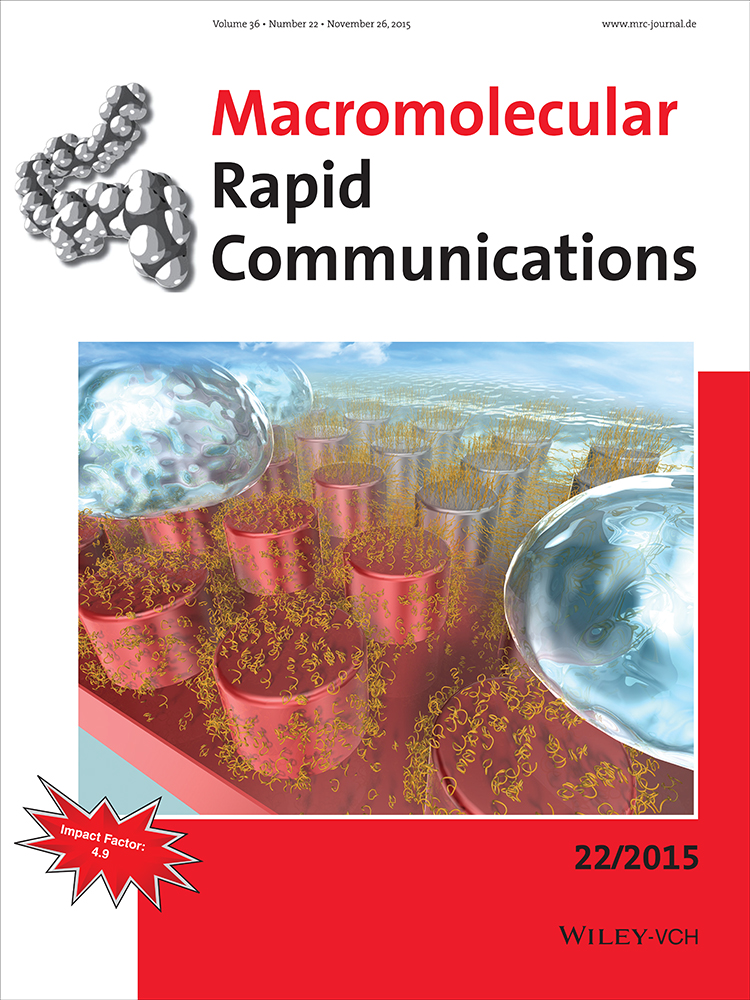Enhanced Wettability Changes by Synergistic Effect of Micro/Nanoimprinted Substrates and Grafted Thermoresponsive Polymer Brushes
Abstract
Thermoresponsive polymer brushes are grafted on micro/nanostructured polymer substrates as new intelligent interfaces that synergistically enhance wettability changes in response to external temperature stimuli. Thermoplastic poly(styrene-co-4-vinylbenzyl chloride) [P(St-co-VBC)] is synthesized using radical polymerization and spin-coated on a glass substrate. Micro/nanopillar and hole patterns are imprinted on the P(St-co-VBC) layer using thermal nanoimprint lithography. Poly(N-isopropylacrylamide) (PIPAAm) brushes are grafted on the micro/nanostructured P(St-co-VBC) layer through surface-initiated atom-transfer radical polymerization using 4-vinylbenzyl chloride as the initiator. The imprinted micro/nanostructures and grafted PIPAAm brush chain lengths affect the surface wettability. Combinations of nanopillars or nanoholes (diameter 500 nm) and longer PIPAAm brushes enhance hydrophobic/hydrophilic changes in response to temperature changes, compared with the flat substrate. The thermoresponsive hydrophobic/hydrophilic transition is synergistically enhanced by the nanostructured surface changing from Cassie–Baxter to Wenzel states. This PIPAAm-brush-modified micro/nanostructured P(St-co-VBC) is a new intelligent interface that effectively changes wettability in response to external temperature changes.





